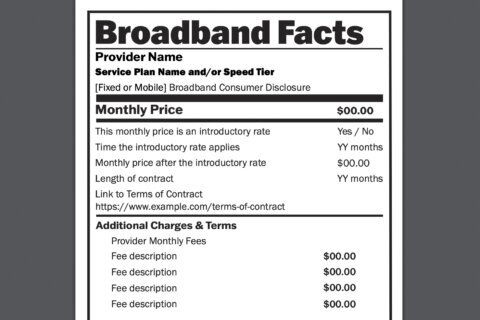WASHINGTON — Year-end 2017 tax planning is presenting its own unique set of challenges. A great deal of uncertainty exists regarding proposed tax reform legislation — uncertainty related to the changes themselves, as well as their timing. Will changes come into play for tax year 2018, or will they be retroactive to 2017? We are playing a “wait and see” game right now.
What we know now
Virtually the only real change between tax rules for 2016 and 2017 is the inflation adjustments to various items — the adjustments we generally see every year. Tax brackets, the standard deduction, retirement plan contributions and income limitations — all the usual items, will be slightly increased for 2017. The annual exclusion for gifts will be raised to $15,000 for 2018, up $1,000 from the $14,000 that has been in effect for several years.
That being said, there are still some strategies to save a few tax dollars before we say goodbye to 2017, so let’s take a closer look.
Charitable giving
Consider making charitable contributions before Dec. 31. Remember that giving appreciated stock (a stock whose value exceeds its cost basis and has been held for over one year) can offer a greater benefit than giving cash, since it will eliminate the capital gain.
For example — suppose you own a stock that was purchased years ago at a very low cost, and its value has grown over the years. If you sell the stock, you’ll need to report and pay tax on a substantial capital gain. Donating the stock to a qualified charity eliminates the capital gain and provides a tax deduction for the value of the stock. Note that donations of appreciated stock are limited to 30 percent of adjusted gross income versus the 50 percent limitation for cash donations. Any excess deduction may be carried forward to the next tax year.
Making qualified charitable distributions (QCD) from your IRA is another great opportunity for those who qualify. The benefit of doing a QCD to fulfill your required minimum IRA distribution (RMD) obligation is that your RMD is excluded from your income altogether. The requirements for donating all or a portion of your IRA RMD include:
- IRA owner must be 70 and a half or older.
- Charitable distribution must be made from a traditional IRA or ROTH IRA.
- $100,000 annual limit per taxpayer.
- QDC must be made directly from the trustee of your IRA to a qualified public charity. The check cannot be made payable to the IRA Owner, private foundation or donor advised fund.
By donating your QDC, you can fulfill both your required minimum distribution and charitable endeavors in a tax-favored way.
Retirement contributions
We say this every year, and it bears repeating — maximize your 2017 retirement contributions. If you participate in an employer-sponsored 401K plan, you should contribute at least enough to realize any potential “employer match.” Also consider increasing your deferral contribution for your last few paychecks of 2017 in order to maximize your tax savings.
Capital gains and losses and qualified dividends
Look for any potential capital loss positions in your portfolio to offset any realized capital gains before year-end. After netting total realized capital losses against realized capital gains, you can deduct a maximum of $3,000 of capital losses against earned or other types of income for the same year. To the extent you realized capital losses exceeding $3,000, you may carry forward this loss to be used against future realized capital gains for an unlimited time period.
While we’re on the subject of capital gains, let’s discuss why you may want to intentionally harvest capital gains in certain tax years. Most people are not aware that there is a zero percent long-term capital gain tax rate for taxpayers in the 15-percent-or-less federal tax bracket. In 2017, that applies to married filers with taxable income up to $75,900 and single filers with taxable income up to $37,950.
Charles Schwab has a handy table for short-and-long-term tax rates at various income levels.
For the same taxpayers in the 15-percent-or-less tax bracket, this zero percent rate also applies to qualified dividends (generally dividends on U.S. individual stocks owned for more than the 60-day holding period) but not to non-qualified dividends (i.e., dividends on some mutual funds, REITS, MLPs and employee stock options). Non-qualified dividends are taxed the same as ordinary income.
For those taxpayers who pay tax rates greater than 15 percent and less than 39.6 percent, you can still take advantage of the lower rate on long-term capital gains and qualified dividends. For example, consider an investor in the 28 percent tax bracket who owns $1 million worth of stocks generating three percent or $30,000 of qualified dividends each year. If those dividends were counted as ordinary income, this investor would get hit with a $8,400 tax bill. However, if these dividends meet the “qualified” definition, they would be subject to the 15 percent tax rate. Their tax bill would be reduced to $4,500 saving an extra $3,900 for the tax payer.
While the taxes on qualified dividends and long-term capital gains is capped at 20 percent for taxpayers in the 39.6 percent tax bracket, keep in mind that you may be subject to the 3.8 percent surtax on net investment income if your adjusted gross income is more than $200,000 (single filers) and $250,000 (married filers).
This zero-percent-to-15-percent tax benefit for long-term capital gains and qualified dividends is often realized by retirees whose ordinary taxable income, after itemized deductions, is low and whose qualified dividend income is a significant portion of their total income. Note that this planning technique can be complicated, and the benefits can vary greatly from year to year depending on your individual tax situation. We strongly recommend consulting with your tax adviser before taking any action.
Planning for small businesses
Equipment purchases of up to $500,000 for your business may qualify for a Section 179 expense write-off in 2017. The property must be placed in service by Dec. 31 in order to qualify. Qualified property includes machinery and equipment. Leased property and real estate generally do not qualify except under certain limited conditions. In addition, make sure to keep track of all your business expenses to maximize your tax deductions. Again, you should consult your tax adviser before taking any final action.
Year-end gifting
Giving year-end gifts is still a popular technique for reducing your taxable estate. Taxpayers may gift $14,000 per person to multiple family members or other individuals before year-end. Married couples may gift up to $28,000 to each individual, if they elect gift-splitting.
Life events
Did you get married, divorced or have a child during 2017? Did you change jobs or become an equity owner at your place of employment? Did you relocate to a new state, buy or sell a principal residence, or start or terminate a new business? Maybe you had a child begin college in 2017. All of these life changes may require a call to your tax adviser to discuss the possible tax effects.
Pending tax reform opportunities
The likelihood of comprehensive tax reform is high. This may be the optimal time to position yourself for the proposed changes. Reform will most likely bring lower tax rates and greater limitations on deductions. Now is the time to consider deferring income to 2018, if possible, in light of the expected income tax rate reductions. Also consider accelerating deductions to 2017 — they will be worth more at 2017’s higher tax rates.
While we can’t know which future tax changes will make the final cut, there are still many opportunities to lower your taxes this year. As our tax laws change, we will let you know how they affect you and your tax bill.
Nina Mitchell is a senior wealth adviser and partner, and Ann Brownholtz is a principal and senior tax advisor at Bridgewater Wealth & Financial Management. They are both co-founders of Her Wealth.







